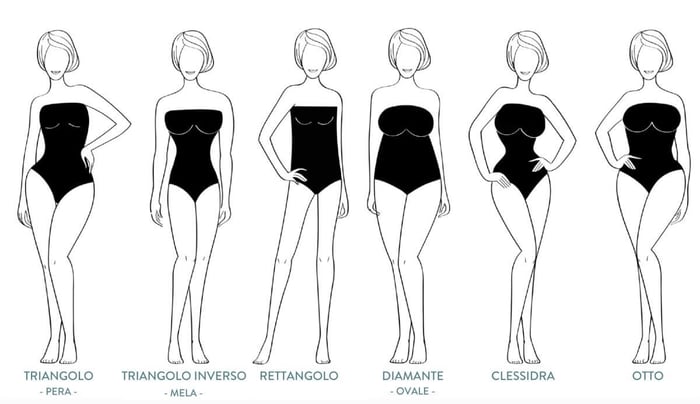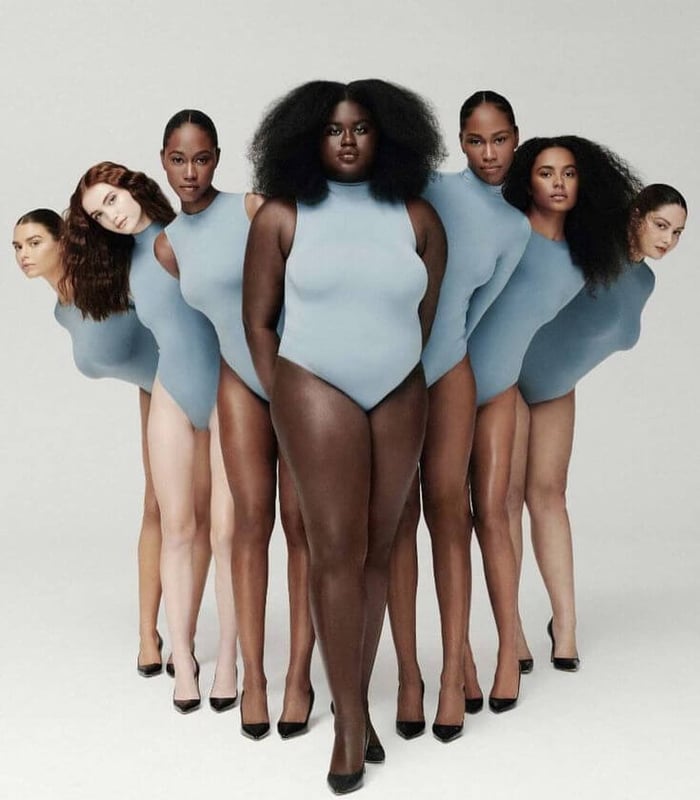How to Dress for Your Body Type: Complete Style Guide
Table of Contents
- Why Dressing for Your Body Type Matters
- How to Identify Your Body Type
- Dressing for the Pear Body Shape
- Dressing for the Hourglass Body Shape
- Dressing for the Apple Body Shape
- Dressing for the Rectangle Body Shape
- Fabrics and Patterns that Flatter Every Shape
- Accessorizing for Your Body Type
- Modelia’s Take on Body Type Styling
- The Psychology of Dressing Well
- Common Myths About Dressing for Your Body Type
- Building a Capsule Wardrobe for Your Body Type
- Seasonal Dressing Tips
- Final Thoughts
- FAQ: How to dress for your body type
Fashion is more than trends; it’s about self-expression, confidence, and feeling comfortable in your own skin. One of the most important steps toward achieving that confidence is understanding how to dress for your body type. When you know what works for your shape, you can highlight your best features, balance proportions, and create outfits that make you feel unstoppable.
In this complete guide, we’ll break down the four most common body shapes, pear, hourglass, apple, and rectangle and share practical styling tips, must-have pieces, and fashion pitfalls to avoid. Whether you’re dressing for a casual outing, a corporate meeting, or a glamorous night out, these tips will help you look and feel your best.
Why Dressing for Your Body Type Matters
Understanding how to dress for your body type can transform your personal style, making it easier to choose outfits that flatter your figure. When clothes fit and flatter your shape, they do more than just look good, they change how you carry yourself. Wearing the right styles for your body type can:
Enhance your natural silhouette by highlighting your best features.
Balance your proportions, creating visual harmony.
Boost your confidence, so you walk into any room with poise.
Simplify your shopping process, saving time and frustration.
It’s not about fitting into one fashion mold, it’s about understanding your own structure and working with it, not against it.

How to Identify Your Body Type
Before learning how to dress for your body type, you need to understand which category your figure falls into.
Pear Shape – Hips are wider than shoulders, waist is well-defined.
Hourglass Shape – Shoulders and hips are balanced, with a narrow waist.
Apple Shape – Broader upper body, fuller midsection, slimmer legs.
Rectangle Shape – Shoulders, waist, and hips have similar measurements, minimal curves.
Grab a measuring tape and jot down your bust, waist, and hip measurements. Compare them to the descriptions above to find your category.
Dressing for the Pear Body Shape
Key Characteristics:
Wider hips and thighs
Narrow shoulders
Defined waist
Goals: Balance your lower body by adding volume and attention to your upper half.
Best Tips:
Choose boat necks, off-shoulder tops, or puff sleeves to broaden the shoulders.
Wear A-line skirts that flow away from the hips.
Go for bright colors and prints on top, with darker shades on the bottom.
Add statement necklaces or earrings to draw attention upward.
Avoid:
Bottoms with heavy embellishments or horizontal stripes.
Tight, clingy fabrics that overemphasize the hips.

Dressing for the Hourglass Body Shape
Key Characteristics:
Balanced bust and hips
Narrow waist
Naturally curvy silhouette
Goals: Highlight the waist and maintain proportion.
Best Tips:
Choose wrap dresses and belted styles that cinch the waist.
Go for tailored jackets that skim the body without adding bulk.
Select fitted tops and skirts that follow your natural lines.
Opt for high-waisted pants to elongate your legs.
Avoid:
Oversized, boxy clothing that hides your curves.
Excessive layering that distorts proportions.
Dressing for the Apple Body Shape
Key Characteristics:
Fuller bust
Less defined waist
Slim legs and narrow hips
Goals: Create a more defined waist and elongate the torso.
Best Tips:
Wear empire waist tops and dresses that sit just under the bust.
Choose V-necklines to draw attention to the face.
Go for structured blazers to add shape.
Highlight legs with slim trousers or skirts.
Avoid:
High necklines that broaden the chest.
Clingy fabrics around the midsection.

Dressing for the Rectangle Body Shape
Key Characteristics:
Balanced bust and hips
Minimal waist definition
Straight silhouette
Goals: Create curves and define the waist.
Best Tips:
Use peplum tops to add volume to hips.
Try layering and textures for dimension.
Wear belts to create an hourglass effect.
Experiment with flared skirts and wide-leg pants.
Avoid:
Shapeless clothing that emphasizes straight lines.
Monochromatic outfits without contrast.
Fabrics and Patterns that Flatter Every Shape
No matter which silhouette you have, knowing how to dress for your body type also means choosing fabrics and patterns that enhance your features.
Soft draping fabrics (like chiffon and jersey) follow the body without clinging.
Vertical stripes create elongation.
Small to medium prints are more versatile than oversized patterns.
Stretch blends offer comfort and flexibility without losing structure.
Accessorizing for Your Body Type
Accessories aren’t just finishing touches, they’re powerful styling tools.
Pear shape: Bold earrings and statement necklaces shift focus upward.
Hourglass: Medium-width belts emphasize the waist.
Apple: Long pendant necklaces create vertical lines.
Rectangle: Layered accessories add depth and texture.

Modelia’s Take on Body Type Styling
Fashion retailer Modelia emphasizes that dressing for your body type doesn’t mean restricting yourself, it’s about discovering the cuts, fabrics, and styles that make you feel empowered. Their stylists often recommend building a capsule wardrobe with a few universally flattering pieces, like a tailored blazer, a wrap dress, and well-fitted denim, that can be mixed and matched for endless outfit possibilities. Modelia’s collections often feature inclusive sizing and adaptable designs, proving that style truly has no size limit.
The Psychology of Dressing Well
Your wardrobe isn’t just about aesthetics; it influences your mood, productivity, and interactions with others. Psychologists call this "enclothed cognition", the way clothing impacts mental performance and confidence. When you wear clothes that fit your body type, you’re more likely to feel in control, project confidence, and engage positively with those around you.
Common Myths About Dressing for Your Body Type
Myth 1: You can only wear certain colors.
Reality: Any body type can wear any color, it’s about placement and balance.
Myth 2: Loose clothing hides flaws.
Reality: Overly loose clothing often makes you look larger and hides your shape.
Myth 3: Trends are off-limits.
Reality: You can adapt trends to your shape by choosing the right cuts and details.
Building a Capsule Wardrobe for Your Body Type
A capsule wardrobe streamlines decision-making while ensuring you always have flattering options. Here’s how to start:
Identify your essentials based on your shape’s flattering styles.
Choose a cohesive color palette to make mixing and matching easier.
Invest in quality basics like tailored blazers, fitted jeans, and versatile dresses.
Add statement pieces that reflect your personal style.

Seasonal Dressing Tips
Your body type doesn’t change with the weather, but your outfit formulas can adapt:
Spring/Summer: Lightweight fabrics, bright colors, breathable cuts.
Fall/Winter: Layer strategically with structured coats, scarves, and boots.
Transitional seasons: Layer with cardigans and light jackets for flexibility.
Final Thoughts
Learning how to dress for your body type is a game-changer. It’s about embracing your unique silhouette, not forcing it into a mold. With the right knowledge, you can shop smarter, dress with confidence, and express your personality through fashion.
Whether you’re just starting your style journey or refining it, applying the principles of how to dress for your body type will help you shop smarter and dress with confidence.
Discover your perfect fit — explore Modelia’s style guide today!
FAQ: How to dress for your body type
What are the four main body types and how can I identify mine?
The four primary body types are pear, hourglass, apple, and rectangle. To determine your body type, measure your bust, waist, and hips. Compare these measurements to the descriptions provided in the guide to identify which category your figure aligns with.
How can I dress to flatter a pear-shaped body?
For a pear-shaped body, the goal is to balance the proportions by adding volume to the upper body and drawing attention upward. Recommended styles include boat neck or off-shoulder tops, A-line skirts, and statement accessories like bold necklaces or earrings.
What styling tips are suggested for an hourglass figure?
An hourglass figure benefits from styles that accentuate the waist and maintain balanced proportions. Opt for fitted or belted garments, V-necklines, and tailored pieces that highlight the natural curves without adding bulk.
How can I build a capsule wardrobe tailored to my body type?
Start by identifying key pieces that complement your body shape. For example, structured blazers for pear shapes, empire waist dresses for apple shapes, and tailored trousers for rectangle shapes. Choose a cohesive color palette and invest in versatile items that can be mixed and matched to create a functional and flattering wardrobe.
How would you rate this article:
Related Articles
- How Generative AI Is Transforming E-Commerce for Brands
- Top 10 Fashion Ecommerce Solutions: Optimize Your Online Fashion Store
- 3D Fashion Design: Revolutionizing Fashion with Cutting-Edge Technology
- How to Style Cool Baggy Outfits with Confidence
- 5 Free AI Face Swapping Online - Best Tools
- 7 Best fashion AI tools for designers
- The Best Fashion Blogs to Follow for Daily Style Inspiration
- How AI Video Generators Can Revolutionize Your Marketing Strategy
- AI Clothes Swap: Revolutionizing Your Wardrobe with Virtual Outfit Transformations
- Top 9 AI Image Description Generators to Create Accurate Captions Automatically
